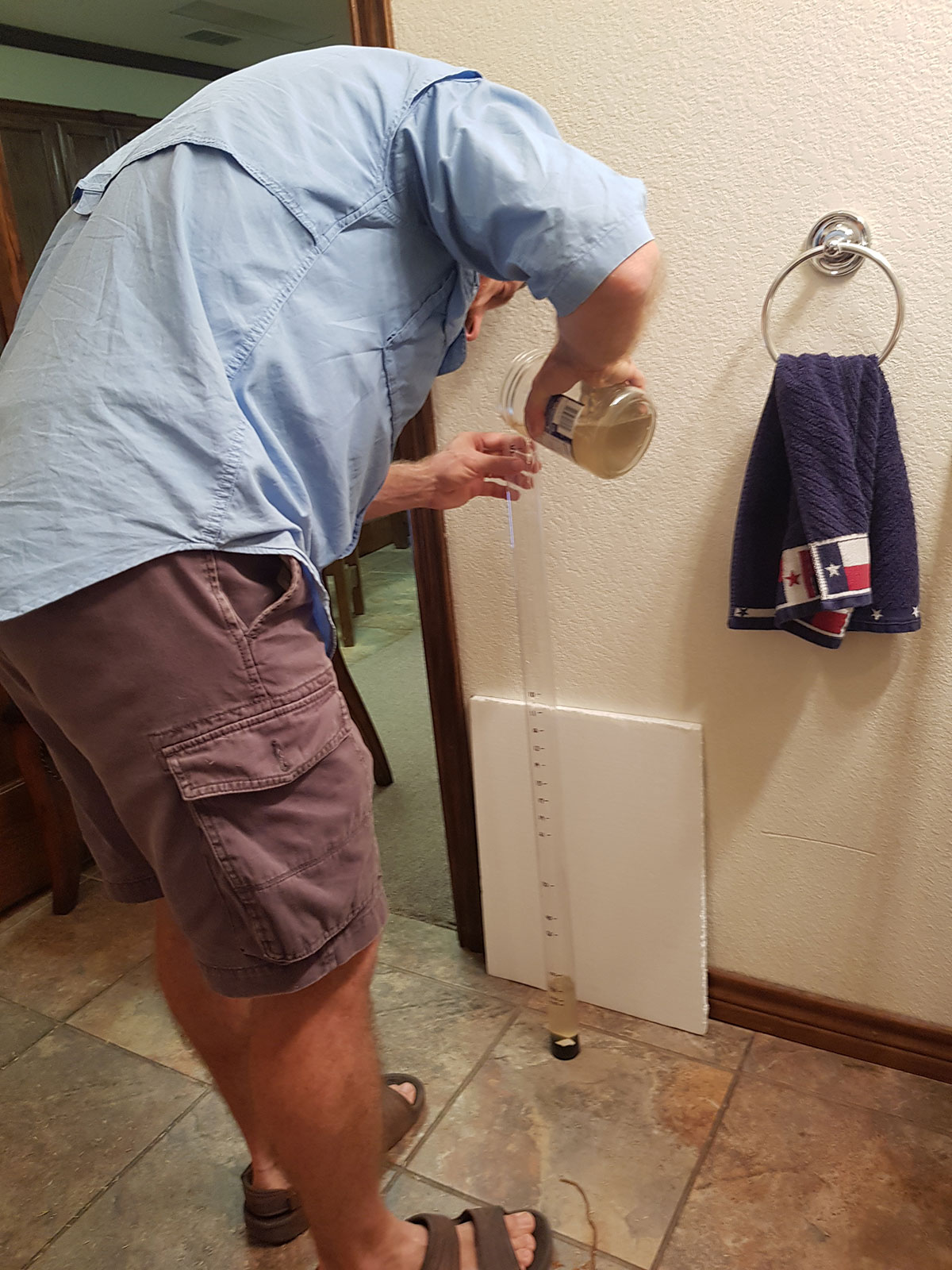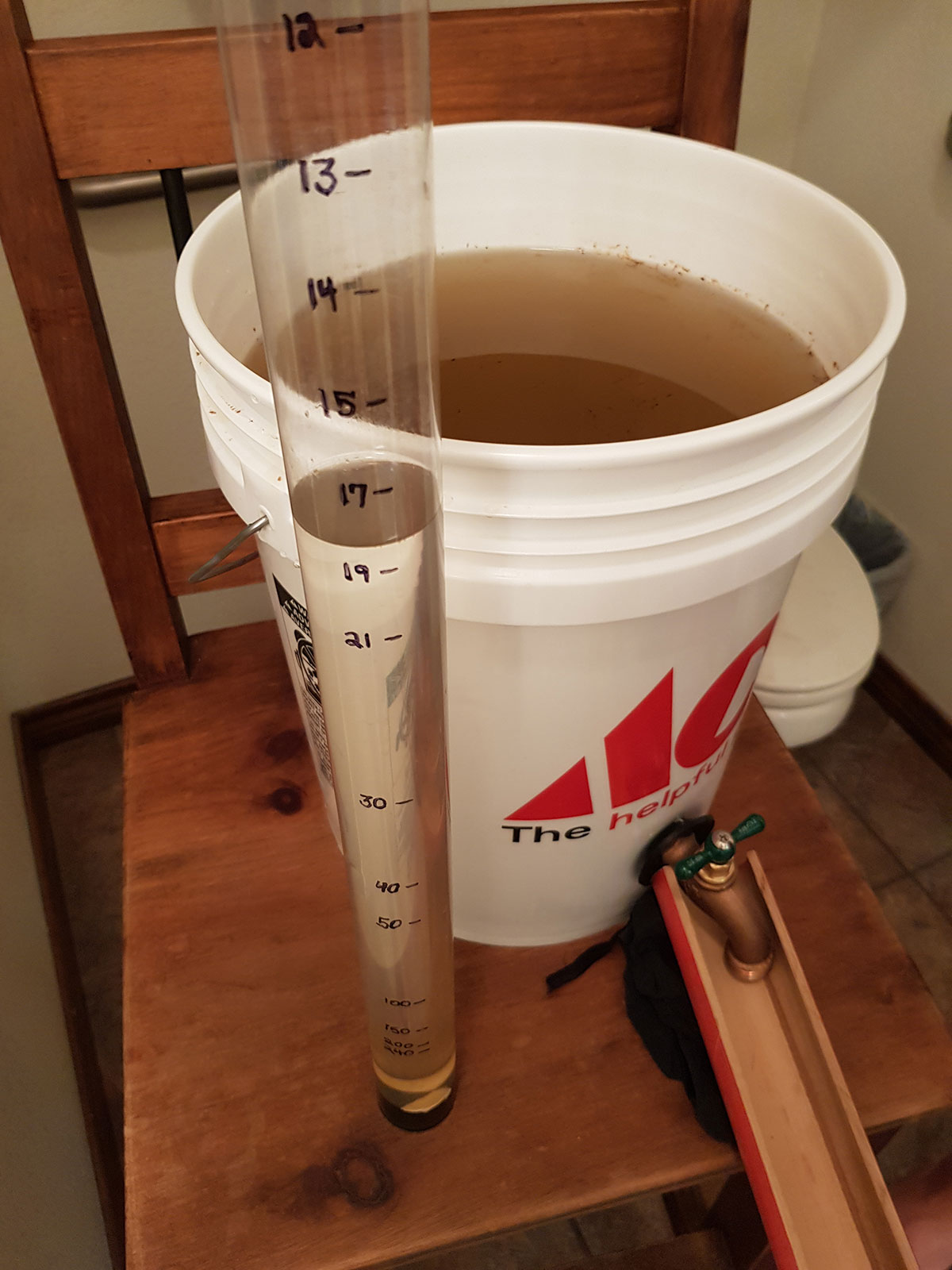Ceramic microbial filters, such as those distributed in Cambodian homes by Kids Across Cultures (KAC), are designed to filter out bacteria and other microscopic nasties that make people sick. Different versions of ceramic filters have been used around the world by diverse philanthropic water organizations to powerful effect. A filter’s life and effectiveness can be limited, however, if water thick with clay, mud, silt, feces, and detritus is poured into it.
In Cambodia, villagers outside Siem Reap typically draw water for their filters from cisterns filled with rainwater. These cisterns are usually open pits and quite turbid. KAC has asked Sweetwater to come alongside them and develop a prefilter using locally sourced, inexpensive, sustainable, materials.
There are two primary tools we can use to reduce turbidity, or “cloudiness”, from water: GRAVITY and FILTERS.
• Gravity works by drawing downward the particles that are suspended in the water. Put simply, settling.
• Filtering works by screening out particles as they flow past the filter.
If you put cloudy water in a bucket and let the particles of dirt settle before decanting the cleaner water off the top, then you’ve let nature do the work for you. The downside is that gravity takes time to act. The cost of settling is time.
If you force cloudy water through a filter before it settles, you can get clearer water more quickly. The downside is that filters cost money and/or time and effort to gather the materials and install them into the plumbing.
Of course we don’t have to lean exclusively on gravity or filtering, we can do both. In order to maximize the benefits of gravity and the benefits of filtering, we can run experiments to determine the optimum amount of settling time and the optimum amount and types of filters. Is there a point in time after which settling slows down and waiting for the smallest particles to settle just isn’t worth it? If balled up shreds of t-shirts in a 1-ft bamboo pole can filter out 80% of the cloudiness, is it worth it to purchase activated charcoal to get out the last 20%?
At the time of this writing, I have just finished my first experiment, testing how much time is required to use gravity for the greatest benefit. Before we get to the results, we need to know something about Nephelometric Turbidity Units. NTU are a way of measuring turbidity in water. If you can’t see very deep into water, then the NTU are high. If you can see deep into the water, the NTU are low. Put simply, NTU measures how much stuff is the water to make it cloudy. Here is a helpful statement by Myre and Shaw, 2006:
“With the naked eye, an average person can begin to see turbidity levels starting at around 5 NTU and greater. Lakes that are considered relatively clear in the United States can have a turbidity up to 25 NTU (Nathanson, 2003). If water appears muddy, its turbidity has reached at least 100 NTU. At 2,000 NTU, water is completely opaque (Joyce, 1996).”
Myre and Shaw also offer a photo to illustrate how the numbers translate in the real world:
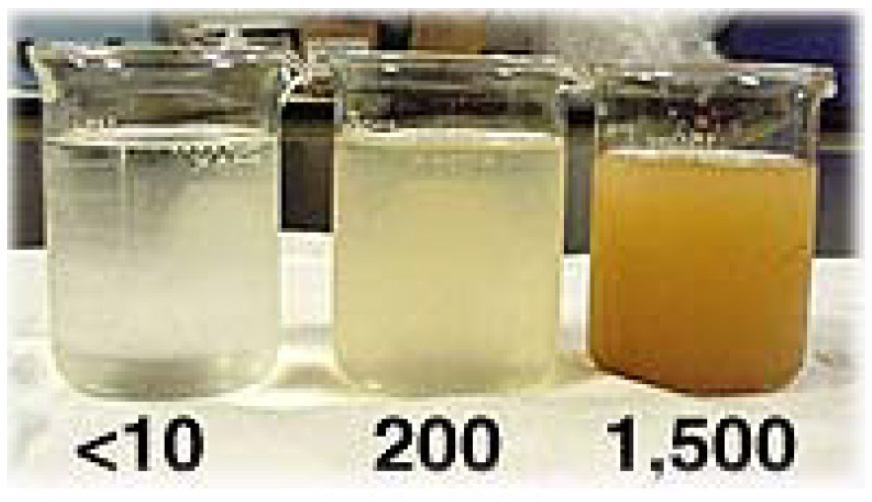
Sample Turbidities (from Howard, 2001).
In order to test the sample water in my experiment I made a Secchi Tube. This is a graduated clear cylinder with a plug at the bottom that is painted with alternating black and white segments. To get an NTU value, I pour a water sample water into the tube while gazing down the tube from the top. At the moment I can no longer see the black and white marks, I stop pouring and measure the depth of the water. The graduated marks on the tube provide an estimation of the turbidity, usually accurate within 5 NTU. There are expensive machines that can produce more precise measurements but for our purposes, the Secchi Tube gets the job done just fine.
Back to the experiment….
I inserted a gated spigot into a 5-gal bucket about 3 inches from the bottom. Five gallons of filthy puddle water from the pasture behind our house was poured into the bucket and an initial sample was drawn from the spigot. The starting turbidity was 260 NTU. Every two minutes for 90 minutes I drew a sample and recorded the results.
Without further ado…
The graphic below shows that over time, NTU values go down. This is good! In 90 minutes, gravity worked on our behalf to remove 68% of the cloudiness, that is, from 260 NTU down to 83 NTU. The graph also tells us something that could save us valuable time: The rate at which cloudiness is removed is high during the first 15 minutes or so, but after that, the rate of turbidity removal slows.
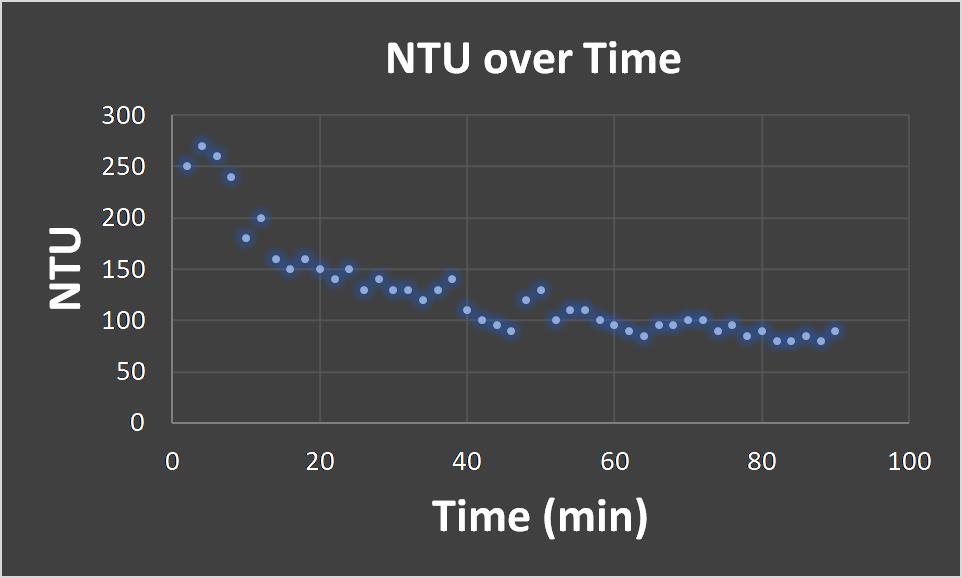
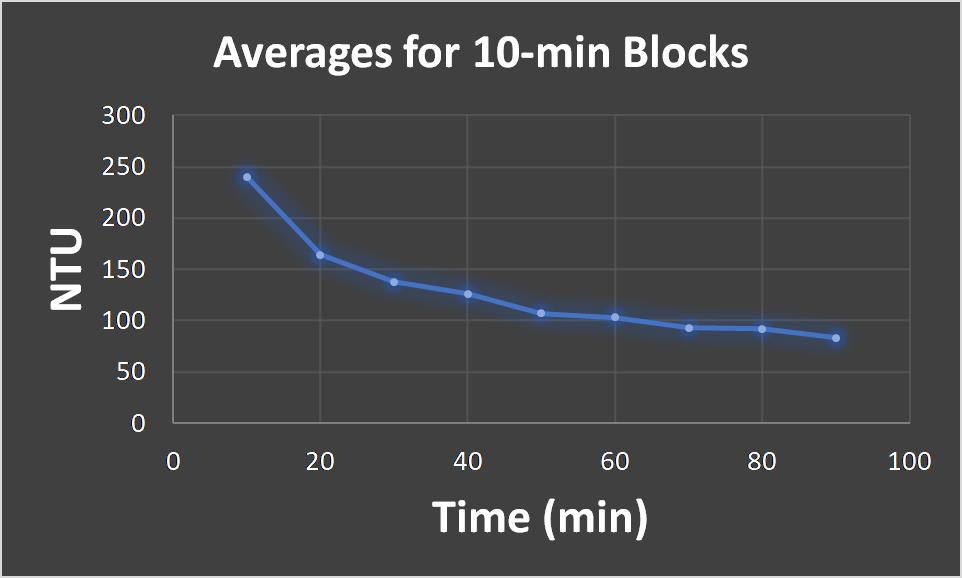
The average NTU during the first 10 minutes of settling, was 240. The average for the next 10 minutes of settling (i.e., the 10-minute mark to the 20-minute mark), was 164. There was more turbidity removed in the first 20 minutes of settling (37%) as there was in the final 70 minutes (31%).
The take away message is this: If we wait 20 minutes for the water to settle and then expose the settled water to a prefilter, we are maximizing what gravity does for us. The prefilter will not become clogged as quickly with debris. If time is of no concern, we can wait another hour before prefiltering and the prefilter life will be further extended. However, when multiple gallons of water must be cleaned up in a short amount of time, waiting 20 minutes is sufficient to gain the greater share of what gravity can do for us.
A logical follow-up experiment I hope to conduct in Cambodia, or shortly after my return, is to add natural coagulants to unfiltered water to speed up the settling process. Coagulants are chemicals that bind very tiny floating particles together so that, when stuck together, their combined weight makes them sink more rapidly to the bottom in clumps. Moringa oleifera, a common tropical tree with terrific health benefits, produces seeds that can be ground into powder and used as a coagulant. Many studies have been produced over the past two decades on Moringa as a water clarifier and antibacterial agent. I encourage enquiring minds to Google the keywords “Moringa coagulant”.
A distinguishing mark of Sweetwater’s mission is that we endeavor to encourage worship of God among our client communities by opening their eyes to the fact that God has gifted them many natural resources for the production of clean water. These experiments that use fancy words like nephelometric and coagulation, are a critical part of fulfilling the mission God has given Sweetwater.
Soli Deo Gloria!
David Pendergrass
Executive Director & Lead Scientist
